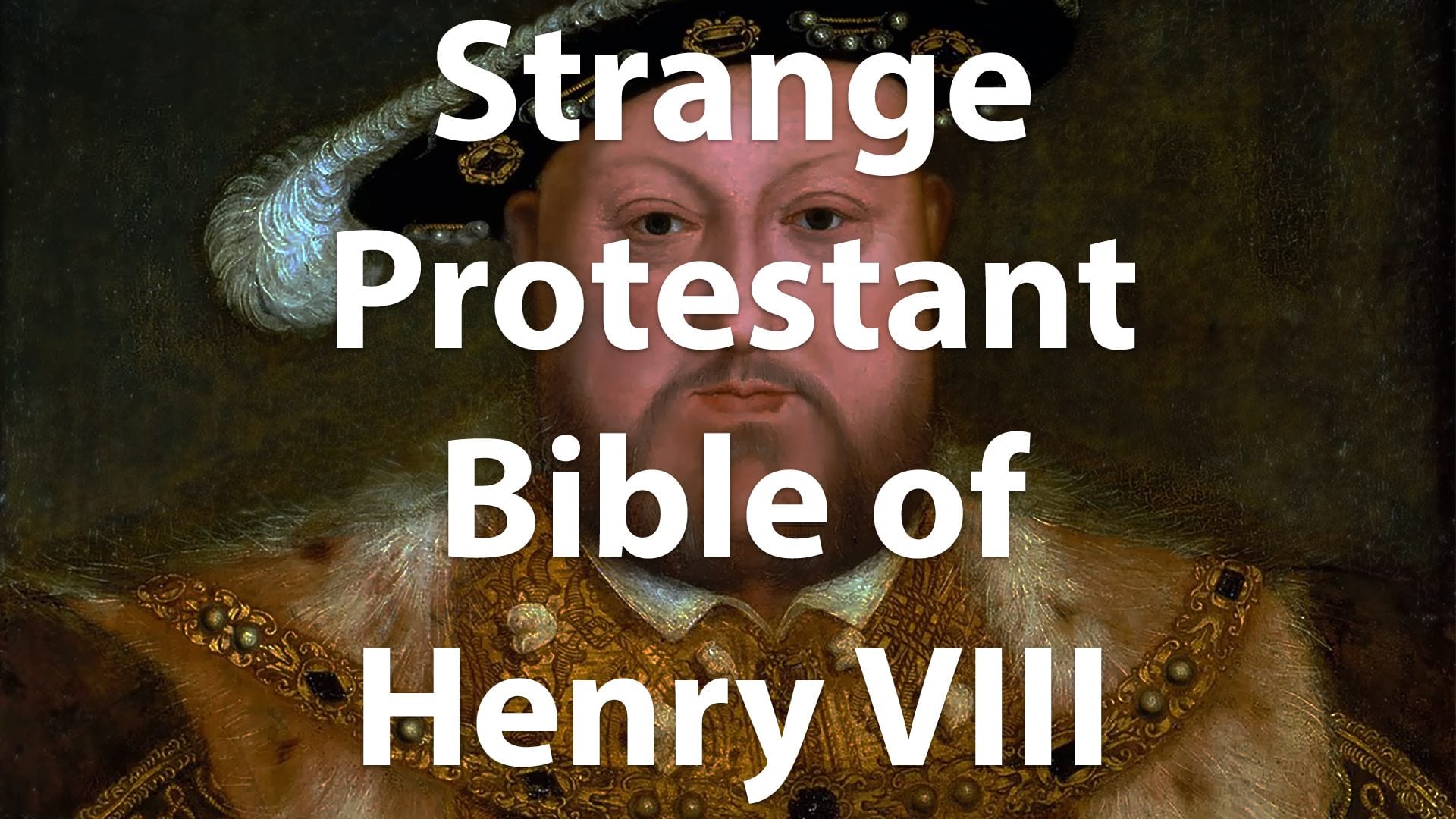For more on the history of the English Bible, check out Ryan M. Reeves and Charles Hill, KNOW How We Got Our Bibles (Zondervan, 2018).
Henry VIII was perhaps the only man in the early English Reformation who was “Catholic without the pope.” For example, he gloated over the execution of William Tyndale for the heresy of translating the Bible into English.
But that same Tyndale Bible was published during his reign. And with the king’s approval.
This is the strange story of Henry VIII’s Bible, a little-known link between Tyndale’s Bible and our modern translations.
Henry VIII and the Tyndale Bible
Henry VIII wrote a work against Luther in 1521, the only monarch in the Reformation to do so. The book was “A Defence of the Seven Sacraments” (Assertio Septem Sacramentorum), which mocked Luther for reducing the number of sacraments to two. As far as we know, few ever read the book. But, for his efforts, Henry VIII was granted the title “Defender of the Faith”—a title still used by English monarchs, including Elizabeth II.
Henry VIII was also usually opposed to the Bible in English. The laws on the books were created after the Wycliffe Bible had become a lightning rod in medieval England. Now that the Reformation was in full bloom, any attempt to translated the Bible into English was seen as heresy.
Tyndale arrived in London in 1522, shortly after Luther was declared an outlaw at the Diet of Worms. The issue in England stems from the fact that it had embraced humanism, especially the love of biblical languages. Erasmus himself had traveled to Cambridge to work for a few years on his Greek New Testament.
Tyndale attempted to get permission for a new English Bible based solely on the principle of ad fontes. He lobbied the London bishop, Cuthbert Tunstall, who mercifully did not have Tyndale arrested. Tunstall did warn Tyndale of the danger of Bible translation, and so Tyndale fled to Europe.
During his time in Europe, mainly in Cologne and Worms, Tyndale produced the New Testament in 1526. Over the remaining years of his life, he managed to translate the Pentateuch and several other Old Testament books. When he was captured and executed in 1536, he was working on his translation of the minor prophets.
The Slow English Reformation
It would make sense if Tyndale’s Bible was never part of the Reformation. However, the Tyndale Bible is the bedrock of nearly all modern English editions of the Bible.
In fact, studies show that, for the books Tyndale translated, between 80 percent and 90 percent of our modern English translations still reflect his original wording. Even the King James Bible relied heavily on Tyndale.
The missing links in the story come from a few English translations during the reign of Henry VIII.
By the 1530s, the same Henry who had raged against Luther now had his own issues with the pope. He and Catherine of Aragon had been unable to produce a male heir. Henry blamed first himself, then Catherine, then the pope. But when the pope refused to grant him an annulment he was white with rage. In 1534, Henry had himself declared head of church and state.
This new anti-papal mood of Henry VIII led to some curious byproducts. For one, Henry attacked the monasteries and dissolved many of them (the rest were removed under Edward VI).
At the urging of men like Thomas Cranmer, Henry also approved of the translation of the Bible into English. This last decision overturned the medieval laws against translating the Bible that had been in place since Wycliffe. This is ironic given Henry’s earlier opposition to the translation of William Tyndale, who had completed the New Testament and roughly a third of the Old Testament before his martyrdom in 1536.
But Henry wanted England to change, and Cranmer had convinced him to accept a new Bible in English.
Tyndale’s Bible as Foundation
So how did Tyndale’s Bible make its way into later Protestant Bibles? The answer is it was smuggled in under the king’s nose.
Two men returned to England after possibly working with Tyndale on the Bible: Miles Coverdale (1488-1569) and John Rogers (1505-1555).
Coverdale was a rolling stone when it came to translations, first helping Tyndale as an assistant before returning to London in 1535. Now back, Cranmer hired him to take the Tyndale Bible and finish the job. Coverdale used the Zurich Bible, Luther’s Bible, the Vulgate, and others to produce the first complete English Bible since Wycliffe: the Coverdale Bible (1535). He would help in the next two English Bibles under Henry, the Matthew’s and Great Bibles before serving on the translation team for the Geneva Bible (1560).
The reason there were several Bibles under Henry is a complex story. The Coverdale Bible was finished first, though it was rushed to completion without officially receiving the okay from Henry. Rather than ask his permission after the fact, the team produced the Matthew’s Bible in 1537 (though there was no Thomas Matthew, and the work was mainly by John Rogers). Printing of this version was halted by the Inquisition, however, when it was sent to Paris.
In the end, the final translation approved by Henry became known as the Great Bible in 1539. Nearly all of the Tyndale texts were repacked in this Bible, allowing his influence to be felt in English Bibles ever since.
It is not an overtly Protestant Bible. Henry VIII retained so much of his Catholic theology he was hardly the model of a Reformation king. But his turn against the pope, and his habit of hiring Protestants as advisers, led Henry to unknowingly give the English-speaking world the Tyndale Bible.
For the video of this story, watch:
